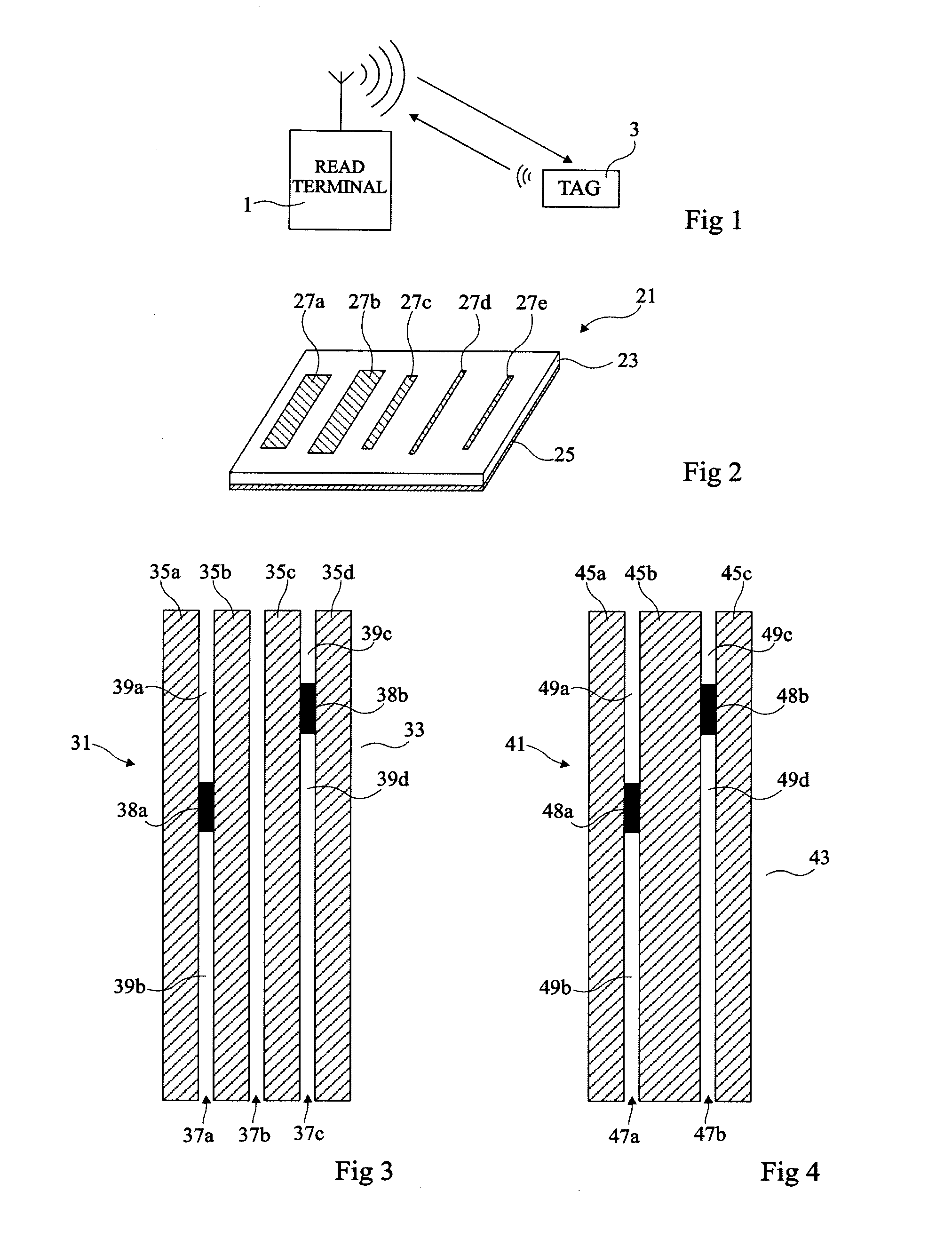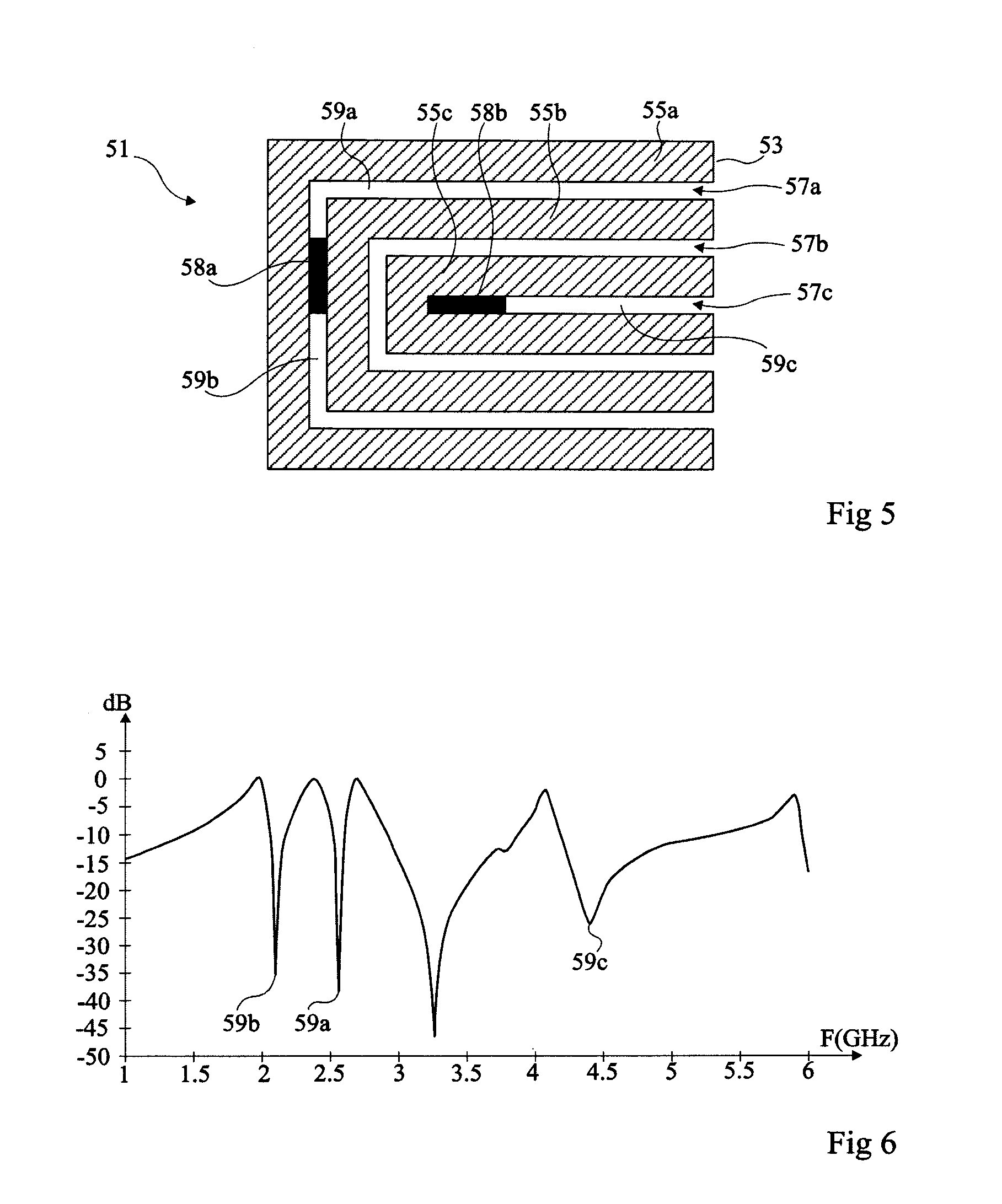Chipless passive RFID tag
a chipless and tag technology, applied in the field of tags, can solve the problems of low data storage capacity per surface area unit of chipless tags of the type described in relation to fig. 2 and the non-negligible cost of tags
- Summary
- Abstract
- Description
- Claims
- Application Information
AI Technical Summary
Benefits of technology
Problems solved by technology
Method used
Image
Examples
Embodiment Construction
[0038]For clarity, the same elements have been designated with the same reference numerals in the different drawings and, further, the various drawings are not to scale.
[0039]FIG. 3 is a top view schematically showing an embodiment of a chipless RFID tag 31. Tag 31 is formed on a dielectric support 33 and supports conductive patterns on a single one of its two surfaces. Four separate parallel rectilinear conductive strips 35a to 35d are formed on this surface. Strips 35a to 35d are identical, aligned along a direction perpendicular to the strips, and spaced apart from one another by a same step. Thus, conductive strips 35a to 35d delimit three identical rectilinear dielectric strips 37a to 37c. Conductive bridges interconnect neighboring conductive strips to delimit, between the conductive strips, portions of dielectric strips of different lengths. In this example, two conductive bridges 38a and 38b respectively interconnect neighboring left-hand conductive strips 35a and 35b and ne...
PUM
| Property | Measurement | Unit |
|---|---|---|
| frequencies | aaaaa | aaaaa |
| thickness | aaaaa | aaaaa |
| thickness | aaaaa | aaaaa |
Abstract
Description
Claims
Application Information
 Login to View More
Login to View More - R&D
- Intellectual Property
- Life Sciences
- Materials
- Tech Scout
- Unparalleled Data Quality
- Higher Quality Content
- 60% Fewer Hallucinations
Browse by: Latest US Patents, China's latest patents, Technical Efficacy Thesaurus, Application Domain, Technology Topic, Popular Technical Reports.
© 2025 PatSnap. All rights reserved.Legal|Privacy policy|Modern Slavery Act Transparency Statement|Sitemap|About US| Contact US: help@patsnap.com



